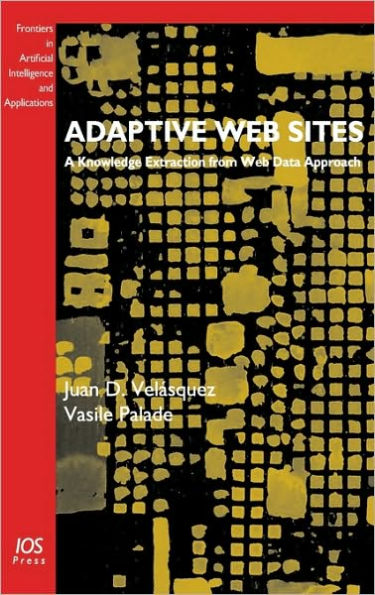Adaptive Web Sites
This book can be presented in two different ways. Firstly, it introduces a particular methodology to build adaptive Web sites and secondly, it presents the main concepts behind Web mining and then applying them to adaptive Web sites. In this case, Adaptive Web Sites is the case study to exemplify the tools introduced in the text. The authors start by introducing the Web and motivating the need for adaptive Web sites. The second chapter introduces the main concepts behind a Web site: its operation, its associated data and structure, user sessions, etc. Chapter three explains the Web mining process and the tools to analyze Web data, mainly focused in machine learning. The fourth chapter looks at how to store and manage data. Chapter five looks at the three main and different mining tasks: content, links and usage. The following chapter covers Web personalization; a crucial topic if we want to adapt our site to specific groups of people. Chapter seven shows how to use information extraction techniques to find user behavior patterns. The subsequent chapter explains how to acquire and maintain knowledge extracted from the previous phase. Finally, chapter nine contains the case study where all the previous concepts are applied to present a framework to build adaptive Web sites. In other words, the authors have taken care of writing a self-contained book for people that want to learn and apply personalization and adaptation in Web sites. This is commendable considering the large and increasing bibliography in these and related topics. The writing is easy to follow and although the coverage is not exhaustive, the main concepts and topics are all covered.
1132306725
Adaptive Web Sites
This book can be presented in two different ways. Firstly, it introduces a particular methodology to build adaptive Web sites and secondly, it presents the main concepts behind Web mining and then applying them to adaptive Web sites. In this case, Adaptive Web Sites is the case study to exemplify the tools introduced in the text. The authors start by introducing the Web and motivating the need for adaptive Web sites. The second chapter introduces the main concepts behind a Web site: its operation, its associated data and structure, user sessions, etc. Chapter three explains the Web mining process and the tools to analyze Web data, mainly focused in machine learning. The fourth chapter looks at how to store and manage data. Chapter five looks at the three main and different mining tasks: content, links and usage. The following chapter covers Web personalization; a crucial topic if we want to adapt our site to specific groups of people. Chapter seven shows how to use information extraction techniques to find user behavior patterns. The subsequent chapter explains how to acquire and maintain knowledge extracted from the previous phase. Finally, chapter nine contains the case study where all the previous concepts are applied to present a framework to build adaptive Web sites. In other words, the authors have taken care of writing a self-contained book for people that want to learn and apply personalization and adaptation in Web sites. This is commendable considering the large and increasing bibliography in these and related topics. The writing is easy to follow and although the coverage is not exhaustive, the main concepts and topics are all covered.
161.0
Out Of Stock
5
1

Adaptive Web Sites
298
Adaptive Web Sites
298
161.0
Out Of Stock

Product Details
| ISBN-13: | 9781586038311 |
|---|---|
| Publisher: | SAGE Publications |
| Publication date: | 02/01/2008 |
| Series: | Frontiers in Artificial Intelligence and Applications , #170 |
| Pages: | 298 |
| Product dimensions: | 6.60(w) x 9.70(h) x 0.90(d) |
From the B&N Reads Blog
